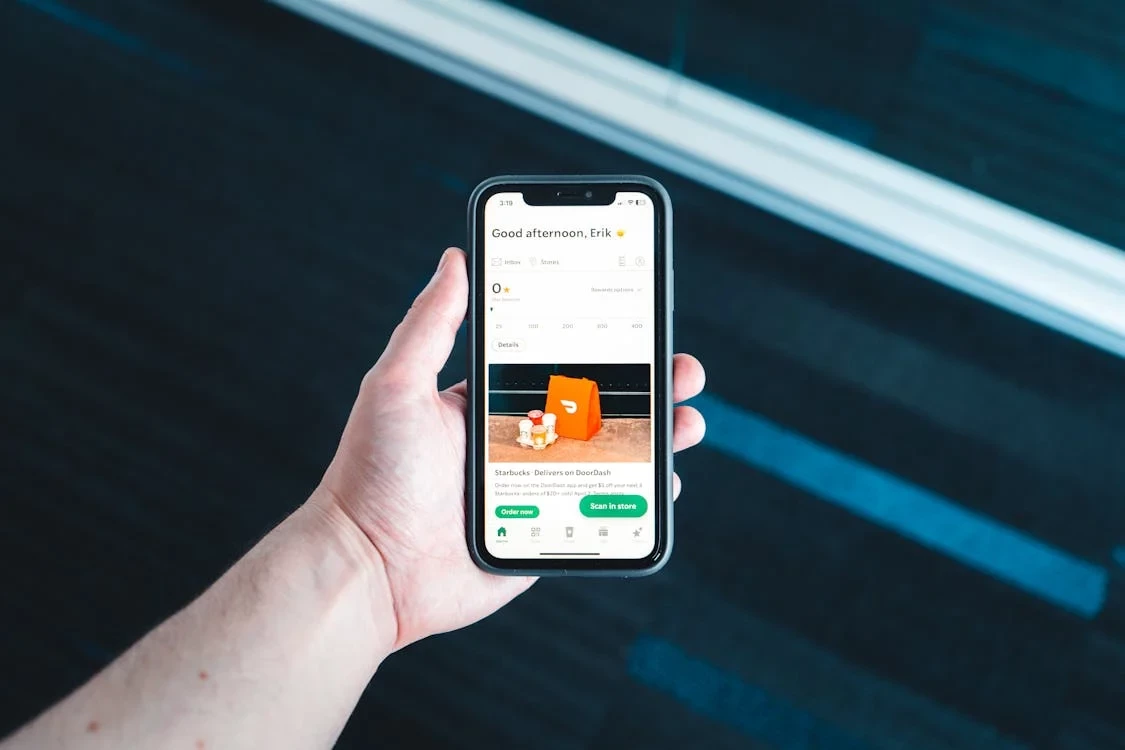Introduction to Security in Food Delivery Apps
In an era where convenience is king, food delivery apps have surged in popularity, reshaping how we indulge in our favorite meals. However, as our reliance on these digital platforms grows, so does the importance of robust security measures. The very nature of food delivery apps — collecting personal information, processing payments, and facilitating real-time communication — makes them appealing targets for cybercriminals, which is why many businesses turn to food delivery app development services to ensure their platforms are secure.
Food delivery application security is not an afterthought; it forms an integral ingredient in their working. It involves sensitive data, ranging from credit card details to addresses of a person, which further raises the urgent need for protection against data breaches and fraudulent activity. With the increase in the usage of contactless transactions, the developers of apps need to keep encryption along with authentication protocols at the top to make sure each interaction is secure.
Since food delivery applications are one of the key armamentaria in security, it should be understood that only proactive approaches toward cybersecurity can keep users’ trust. Such platforms can protect not just users’ data but also brand reputation in an increasingly competitive market by implementing strict security practices.
Importance of Security Measures
In today’s world, convenience is king, and food delivery apps have increased in popularity, even making it possible to enjoy the luxury of eating from the comfort of home. Of course, that comes with a great risk. One would want to have strong security not only to protect customer data but also to retain consumer trust in this competitive environment.
First, personal and payment information is the favorite target of cyber criminals. A single breach may reveal sensitive details and result in users’ identity theft and financial loss. Security for companies means protection, not just for their customers, but also for their reputation from potential fallout.
Further, with the increase in contactless delivery, the security of communication between customers, delivery personnel, and restaurants is an important issue. Encryption messaging and safe payment gateways have secured the inability to access unauthorized access for the creation of a safer transaction environment.
More importantly, it will be the increasingly security-aware consumers who will make their loyalty contingent upon how serious a brand is with information protection. Therefore, investment in end-to-end security is not only a regulatory necessity but a strategic one to help an application distinguish itself in the competitive market for better customer retention and experience.
Common Security Threats in Food Delivery Apps
While food delivery applications are in the ever-evolving landscape, they now come with security threats that loom larger than ever and pose a serious risk to not only the consumers but also the businesses. The biggest threats these days come in the form of data breaches whereby certain sensitive user information, including their payments, addresses, and everything else one can imagine, is targeted by the hacker. Since personal data has really become a gold mine for cybercriminals, one breach might lead to identity theft and financial fraud.
Other serious concerns include phishing attacks. Individuals are exposed to several fake messages or emails, supposedly from food delivery services, asking them for their personal details. In this manner, they compromise an account and can execute unethical transactions.
Another severe vulnerability relates to insecure payment gateways. Any inadequately secured payment gateways could be exploited by an attacker to siphon off funds or manipulate financial data.
Finally, there is account takeover-the act of an attacker taking unauthorized control of a user’s account. For the most part, this is done by means of weak passwords or stolen credentials to enable the hackers to make fraudulent orders.
Considering the foregoing security threats mentioned above, with continued growth in the food delivery market, becomes key in offering protection both to the consumer and businesses within this digital marketplace.
User Authentication and Access Control
MFA: Force them to enter a second form of verification other than a simple password. This may be in the form of a single-use code sent to their phone, via SMS, or even via email.
Strong Password Policies: Enforce the creation of tough passwords by demanding a minimum length and variety of characters, and optionally routine password changes.
Account Lockout: After reaching a threshold of incorrect attempts, an account should automatically be locked out for some temporary time period to avoid brute-force-type attacks.
Session Management: Provide the implementation of automatic session timeouts. When sessions timeout, a user is required to log in again because such mechanisms help to minimize unauthorized access.
Role-Based Access Control: In general, users must be granted access only to information they need to know relevant to their role. This means limiting how much data is exposed to users to reduce sensitive information from users.
Data Encryption Techniques
Due care in food delivery applications should emanate from the protection of user data. Probably the best method of doing so is through full data encryption techniques. Encryption acts like a kind of digital lock. It converts sensitive information into unreadable formats that only certain parties can interpret.
There are mainly two types of encryption that food delivery apps can employ: symmetric and asymmetric encryption. While symmetric encryption involves the use of the same key for a pair of encryption and decryption, making the process faster and more efficient for real-time transactions, asymmetric encryption uses a pair of keys, one public and one private, to provide an extra layer of security in the transmission of sensitive information, such as details regarding payment.
Furthermore, the use of end-to-end encryption has protected data from the moment it leaves a user’s device up to the time it is delivered to another user. This even extends to mean that should the data be intercepted while in transmission, it remains inaccessible to users other than those authorized to have access.
Advanced security protocols, such as AES and TLS, will protect user information and help establish confidence in using such a service. Key aspects of such security are listed below.
Secure Payment Processing
Encryption Technology: Make use of end-to-end encryption to secure sensitive payment information as it goes across the internet. In such a case, even when intercepted by unauthorized users, the information will not be readable.
Tokenization: The sensitive card information is replaced with a unique identifier or token. This adds a layer of security, since the actual details of the card are not stored or transmitted.
Two-Factor Authentication: Enable 2FA in user accounts for extra security, so that another form of verification may be needed rather than entering a password. This drastically cuts down the risk of unauthorized access.
Secure Payment Gateways: Integrate well-established payment gateways that follow the set standards by the industry, such as PCI DSS, in a bid to increase transactional security.
Periodic Security Audits: Periodic audits and scanning for vulnerabilities shall be performed in order to detect and fix any loopholes in the payment processing system.
Periodic Security Audits and Updates
Security audits and updates are not only best practices but also the lifelines that can save a business and its consumers from potential threats in the rapidly evolving landscape of food delivery applications. Such audits are all-inclusive reviews of an application’s security posture, pinpointing weak links that could be used to cybercriminals’ advantage. Periodic evaluation enables the company to stay ahead and fortify against emerging threats.
The updates should not only be bug fixing but also the improvement of encryption protocols and methods of authentication. By this, user data will remain secure since technology keeps on evolving, the tactics of the hackers change equally. Regularly scheduled updates keep the app fortified against new vulnerabilities and ensure the application complies with the latest security standards.
Secondly, the security culture needs to be inculcated into the organization. Training staff to understand the different aspects of security issues that may arise and why audits need to be performed periodically might bring down those risks significantly. In an industry where trust is paramount, proactively taking steps towards security audits and updates means the protection of sensitive information opens avenues to continued growth in the loyalty of customers in a very competitive market.
User Education and Awareness
Security in this age of speedy food delivery is all about educating the user and creating awareness. Consumers are really negligent when it comes to protecting their personal information while ordering their favorite meals. This calls for educational awareness by the food delivery platforms themselves through in-app tips, articles, and interesting videos that demonstrate good practices while using the internet.
This will be a first step in this learning process, where the customers will be informed of the risks that come with public Wi-Fi. Most customers might unknowingly compromise their sensitive information by ordering food over unsecured networks. Educating them on how to switch to VPNs or use mobile data would greatly strengthen their security.
Secondly, it is important to educate customers on phishing fraud camouflaged in the form of genuine delivery messages. It will train them to be more alert and cautious against suspicious emails, texts, or app notifications that may eventually lead to unauthorized access to their accounts.
Another very important aspect is the encouragement of users to enable two-factor authentication and generate strong and unique passwords. A food delivery application creates a security-sensitive culture that takes proactive steps by the users in the way information is set up, hence making the delivery experience secure and trustworthy.
Incident Response and Recovery Plans
- Incident Identification: It is necessary to put in place means of quickly identifying and reporting any event relating to a security incident. This calls for monitoring the systems and feedback from users.
- Form an incident response team comprising cybersecurity experts, legal advisors, and PR experts to clearly address the situation.
- Communication Strategy: There should be some proper communication strategy planned regarding how the affected users, stakeholders, and, if necessary, the media are informed. Transparency builds trust.
- Damage Assessment: Carry out an in-depth analysis to ascertain how serious the breach or disruption was. Identify what data and systems have been compromised.
- Containment and Eradication: Highlight immediate steps required for containment of the incident, removing the threat, and preventing further damage.
- Recovery Procedures: Steps that could be carried out to restore services and systems affected, ensuring data integrity and security during restoration.
- Post-Incident Review: Once the incident has been contained, a debriefing session needs to be conducted where responses would be gauged for effectiveness, thus helping improve responses in the future.
Conclusion and Future Trends in Food Delivery App Security
The development of the food delivery app is highly interlinked with robust security features. Companies should lay emphasis on installing advanced encryption protocols, a secure payment gateway, and regular security audits to safeguard user data in order to create trust. In updating the security features, development related to artificial intelligence and machine learning will help in fraud detection on a real-time basis, which can respond to threats automatically.
Due to the growing awareness of privacy concerns and strict regulations, food delivery apps will now have to adapt themselves for compliance with GDPR, CCPA, and all other laws related to providing more transparency in customer data handling. We will also see the feature of biometric authentication methods such as facial and fingerprint recognition coming into play to help users add an extra level of security in the near future.
Moreover, blockchain technology is the future in this trend that can only revolutionize the security features of every food delivery application by giving tamper-proof records of transactions that further assure customers of their integrity. As the industry keeps on evolving, proactive security will protect not only the users but also the brand reputation, assuring its place in the long run in this highly competitive landscape.


